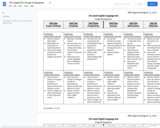
7th Grade Regular English Language Arts: Course Scope & Sequence.
- Subject:
- English Language Arts
- Material Type:
- Full Course
- Provider:
- Liberty Public Schools
- Date Added:
- 08/15/2017

7th Grade Regular English Language Arts: Course Scope & Sequence.
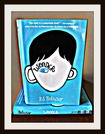
This is a 7th grade ELA lesson plan which could be used at the end of a novel study of RJ Palacio's Wonder.
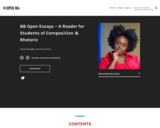
This collection is intended to provide instructors with a wide variety of nonfiction examples of good writing that they can use to teach composition.
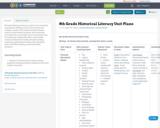
8th Grade Historical Literacy consists of two 43 minute class periods. Writing is one 43 minute block and reading is another. The teacher has picked themes based on social studies standards, and a read-aloud novel based on social studies serves as the mentor text for writing and reading skills. More social studies content is addressed in reading through teaching nonfiction reading skills and discussion.
Standards reflect CCSS ELA, Reading, and Social Studies Standards.

Word Count: 71834
(Note: This resource's metadata has been created automatically by reformatting and/or combining the information that the author initially provided as part of a bulk import process.)

This English Language Arts lesson for 9th or 10th graders focuses on reading comprehension and vocabulary via nonfiction articles linked from commonlit.org, and addresses the following NE state standards: NE.LA 10.1.5.A; NE.LA 10.1.5.C; NE.LA 10.1.6.A; NE.LA 10.2.2.BThe lesson will take approximately 90 minutes.

Through this unit, students will explore Asian American and Pacific Islander (“AAPI”) women’s poetry in order to craft and inspire their own poetry. After analyzing and interpreting poems, students recognize poetry as a vehicle to express their own untold stories about events small and large.
This unit will expose students to voices of AAPI women poets. Their experiences will help facilitate a dialogue of identity, beauty, tradition and activism. Many students face these issues during this pivotal time of their development.
Furthermore, this unit will help students explore their viewpoints as they craft and design their own poems and explore the readings. This unit allows students of all abilities and intersectionalities to make their voices heard and draw from their unique perspectives.
2021 Social Science Standards Integrated with Ethnic Studies:
Civics and Government: 7.5, HS.2, HS.11
Geography: 6.14, HS.51
Historical Knowledge: 6.21, 8.22, 8.25, HS.63, HS.64, HS.65, HS.66
Historical Thinking: 7.25, 8.32
Social Science Analysis: 6.24, 6.27, 7.28, 7.29, 8.36, HS.78
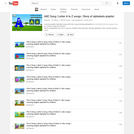
Series of videos for elementary students on ABC Song | Letter A to Z songs | Story of alphabets by eLearnin
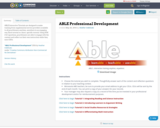
ABLE Interactive Tutorials are designed to make training from supplemental service providers available to all practitioners anytime, anywhere in an engaging way. Each tutorial is a short, specific tutorial. Using DOK 2 & 3 questions, practitioners are able to engage with the content and reflect on their own instruction while they earn CEUs.
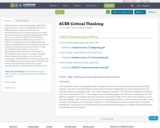
ACES (Academic, Career & Employability Skills) The goal of ACES is to ensure that Adult Basic Education (ABE) programs are able to provide effective contextualized instruction integrating post-secondary education and training readiness, employability skills, and career readiness at all levels. The Transitions Integration Framework (TIF) is the cornerstone of ACES. It was designed to provide ABE programs and instructors with guidance on the effective integration of transitions skills into instruction at all levels of ABE. The TIF defines the academic, career, and employability skills essential for adult learners to successfully transition to post-secondary education, career training, the workplace, and community involvement. The ACES Resource Library contains tools to help ABE practitioners incorporate the TIF skills into lessons and instructional settings and provides materials that can be used directly with adult learners.
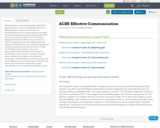
ACES (Academic, Career & Employability Skills) The goal of ACES is to ensure that Adult Basic Education (ABE) programs are able to provide effective contextualized instruction integrating post-secondary education and training readiness, employability skills, and career readiness at all levels. The Transitions Integration Framework (TIF) is the cornerstone of ACES. It was designed to provide ABE programs and instructors with guidance on the effective integration of transitions skills into instruction at all levels of ABE. The TIF defines the academic, career, and employability skills essential for adult learners to successfully transition to post-secondary education, career training, the workplace, and community involvement. The ACES Resource Library contains tools to help ABE practitioners incorporate the TIF skills into lessons and instructional settings and provides materials that can be used directly with adult learners.
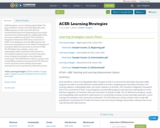
ACES (Academic, Career & Employability Skills) The goal of ACES is to ensure that Adult Basic Education (ABE) programs are able to provide effective contextualized instruction integrating post-secondary education and training readiness, employability skills, and career readiness at all levels. The Transitions Integration Framework (TIF) is the cornerstone of ACES. It was designed to provide ABE programs and instructors with guidance on the effective integration of transitions skills into instruction at all levels of ABE. The TIF defines the academic, career, and employability skills essential for adult learners to successfully transition to post-secondary education, career training, the workplace, and community involvement. The ACES Resource Library contains tools to help ABE practitioners incorporate the TIF skills into lessons and instructional settings and provides materials that can be used directly with adult learners.
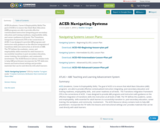
ACES (Academic, Career & Employability Skills) The goal of ACES is to ensure that Adult Basic Education (ABE) programs are able to provide effective contextualized instruction integrating post-secondary education and training readiness, employability skills, and career readiness at all levels. The Transitions Integration Framework (TIF) is the cornerstone of ACES. It was designed to provide ABE programs and instructors with guidance on the effective integration of transitions skills into instruction at all levels of ABE. The TIF defines the academic, career, and employability skills essential for adult learners to successfully transition to post-secondary education, career training, the workplace, and community involvement. The ACES Resource Library contains tools to help ABE practitioners incorporate the TIF skills into lessons and instructional settings and provides materials that can be used directly with adult learners.
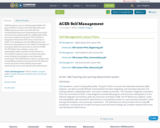
ACES (Academic, Career & Employability Skills) The goal of ACES is to ensure that Adult Basic Education (ABE) programs are able to provide effective contextualized instruction integrating post-secondary education and training readiness, employability skills, and career readiness at all levels. The Transitions Integration Framework (TIF) is the cornerstone of ACES. It was designed to provide ABE programs and instructors with guidance on the effective integration of transitions skills into instruction at all levels of ABE. The TIF defines the academic, career, and employability skills essential for adult learners to successfully transition to post-secondary education, career training, the workplace, and community involvement. The ACES Resource Library contains tools to help ABE practitioners incorporate the TIF skills into lessons and instructional settings and provides materials that can be used directly with adult learners.

The Framework, re-framed in "plain English" for students and faculty. The goal was to make the ACRL Framework easier to understand (many people don't use iterative in everyday conversation, for example) and to make the connection between information literacy and institutional mission/vision and learning outcomes clear.
Cover photo by geraldo stanislas on Unsplash
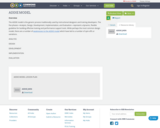
The ADDIE model is the generic process traditionally used by instructional designers and training developers. The five phases—Analysis, Design, Development, Implementation, and Evaluation—represent a dynamic, flexible guideline for building effective training and performance support tools. While perhaps the most common design model, there are a number of weaknesses to the ADDIE model which have led to a number of spin-offs or variations.ANALYSISDESIGNDEVELOPMENTIMPLEMENTATIONEVALUATION
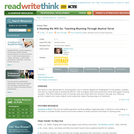
Adapting the song "A-Hunting We Will Go," students put a "whale" in a "pail" and even "take a little "bear" and hug it if we "dare"."

This resource includes traditional writing prompts as well as prompts and assignments that utilize AI-generated text. It covers the fields of Creative Writing, Composition, and Business and Technical Writing.
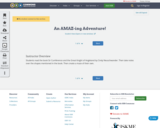
Students read the book Sir Cumference and the Great Knight of Angleland by Cindy Neuschwander. Then take notes over the shapes mentioned in the book. Then create a maze of their own.
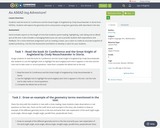
Students read the book Sir Cumference and the Great Knight of Angleland by Cindy Neuschwander in Storia from INFOhio. Students will explore the geometry terms and practice using basic geometry skills described in the text.AssessmentStoria includes reports on the length of time that students spend reading, highlighting, note taking and an eBook quiz at the end. It also includes a messaging feature you can use to provide students with expectations and feedback. For a more extensive assignment such as creating a maze, use a rubric to create an accurate snapshot of student proficiency. Use this link Assessment and Rubrics to develop a rubric for your students.